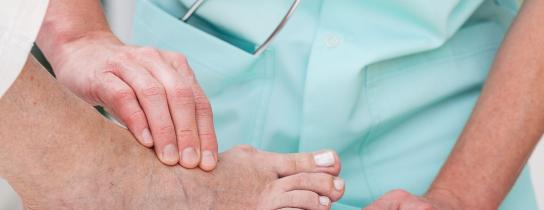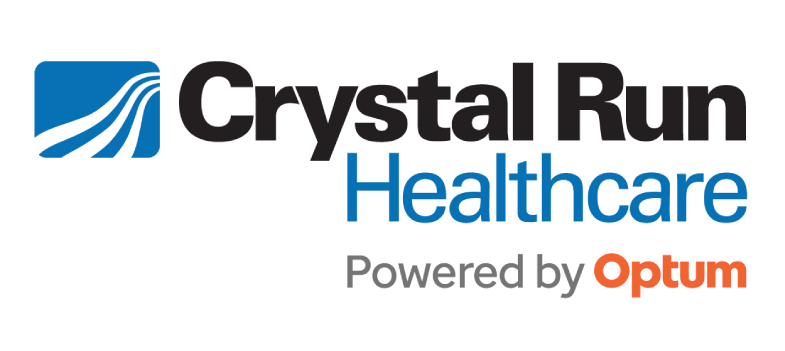
Bunion Pain: Symptoms, Causes, and Treatment Options
A bunion is a painful deformity that can negatively affect your ability to walk and exercise. Learn how to identify the causes of bunions, how to alleviate symptoms, and when to visit a podiatrist for further treatment.
What Are Bunions?
Bunions are bony bumps that form around or on one of your toe joints, most commonly at the base of the big toe. Bunions form when the metatarsal joint in your toe juts outward and pushes your toes together or raises your toe joint above the rest of your toes, causing a misaligned MTP (metatarsophalangeal) joint.
Excess pressure is placed on the MTP joint by shoes, most of which are not designed to accommodate bunions. This eventually leads to inflammation of the bursa, or the fluid sac that protects the MTP joint, causing stiffness and pain. While bunions most commonly form on the big toe, you can also develop a bunion on the pinky toe.
Although they occur in both men and women, bunions tend to be several times more common in women. They are also common in people whose occupations require standing for long periods, and those who place repeated stress on the feet.
Are Bunions Hereditary?
Bunions can develop as a result of the shape and structure of the foot, which is hereditary. One study revealed that 83% of people who develop bunions often do so because they have a family history of bunions.1
Those without a family history often develop bunions due to improperly fitted shoes, especially those which force the toes into a narrow and pointed position.
Some inflammatory and neuromuscular conditions can also cause bunions to develop.
Bunion Symptoms
There are many early signs of bunions. Early signs include loss of balance, stiff or restricted toe movement, or even pain in the affected toe.
Along with these symptoms of bunions, people also experience physical symptoms like:
- Calluses
- Swelling
- Redness at the site of the bone protrusion
How Are Bunions Diagnosed?
A doctor diagnoses bunions through a physical examination of the affected foot, observing your symptoms and the appearance of your foot. They will also order x-rays to get a look at the bone structure of your feet.
X-rays can reveal MTP joint damage, bunion severity, and the structure of your foot bones. X-rays can also help your doctor to determine whether your bunion was caused by arthritis or other joint-related conditions.
Treating Bunions
Most bunions do not require surgery to be successfully treated. Many doctors will suggest nonsurgical lifestyle changes in order to alleviate symptoms before recommending surgery.
Shoes
The first treatment for bunions is to change the style of the shoes you wear. To do this, choose footwear that offers enough room in the toe box to accommodate all your toes in their natural positions, as well as the bunion. Shoes with a soft leather upper, like athletic shoes or sandals, allow for toe and bunion space, and choosing wide-style shoes also provides needed space for your toes.
Pads and Spacers
After choosing the correct shoe style, adding pads made of gel, felt, or other protective materials can relieve bunion pain by protecting the affected area when wearing shoes. You can also use a spacer made specifically to separate the first and second toes. Both of these products can be found at drug stores.
Bunion Correctors
Bunion medical devices, available in sleeve or splint form, can be worn at night to prevent further discomfort. While they can help with pain reduction, correctors alone may not be sufficient to correct the root cause of bunions.
Exercises and Stretches
Certain exercises and stretches can treat an existing bunion and prevent one from developing.
Toe circles and figure eights reduce stiffness and increase the range of motion of your toe joint. Simply grip your big toe, rotate it circling clockwise, and then counter-clockwise 20 times each way, repeating with the other big toe. Aim for two to three sets for each toe. For further flexibility, move each toe in a figure eight pattern ten times for two to three sets.
Toe spreads and assisted toe abductions encourage separation between the big and second toes. While sitting, place your feet on the floor and press your heels to the ground, and then raise and spread your toes. Aim for 20 spreads per foot.
Assisted toe abduction involves wrapping an exercise band around both big toes simultaneously and pulling them as far as possible in the opposite direction of the other toes. Holding the band tight, fully extend for five seconds before releasing and repeating 20 times.
Custom Orthotics
Custom orthotics are shoe inserts made by podiatrists. While you can find orthotic inserts in stores for purchase, custom orthotics are designed just for your feet and the specific problems you are experiencing.
These devices offer arch support for those with bunions due to flat feet. Custom orthotics also help improve balance, increase comfort, and alleviate pressure because they improve the angle of the foot while standing, walking, or running.
Surgery
If bunion prevention and the above treatment methods are ineffective at reducing pain or improving a bunion, surgery may be considered to realign the big toe. Osteotomy, arthrodesis, and exostectomy are all common types of bunion surgery. Your podiatrist will be able to recommend the best surgical option for you.
Bunions can be painful but are treatable. Crystal Run Healthcare’s expert podiatrists specialize in complex foot and ankle care with state-of-the-art methods and equipment. Our foot and ankle doctors treat patients of all ages, from infants to people of advanced age. Crystal Run podiatrists use conservative treatments or, if needed, minimally invasive surgical techniques whenever possible. With five locations in New York State, the podiatrist care you need is always close to home. Schedule your appointment online or call 845-703-6999.
Source:

 Optum Radiology at Crystal Run Healthcare
Optum Radiology at Crystal Run Healthcare Request medical records online
Request medical records online